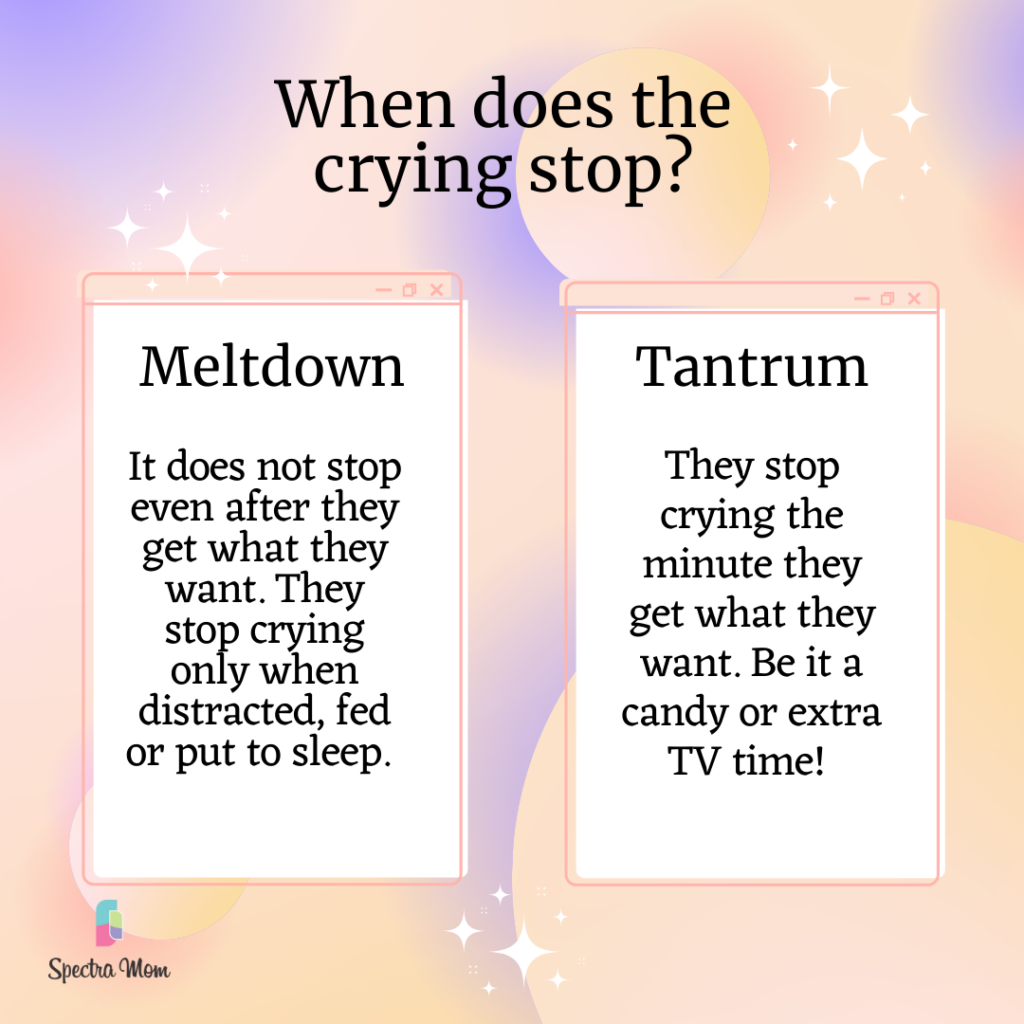As a parent, it becomes difficult to understand when a child is having a meltdown or when they are throwing a tantrum on purpose. While we practice gentle parenting, we must not forget to set boundaries. Setting clear boundaries with respect is what makes gentle parenting possible. You cannot give in to every demand of your child at the cost of your own mental health.
So how do you kow when your child needs to be taken care of versus when your child needs to be taught boundaries (all while being respectful).
Here is how I differentiate between a meltdown and a tantrum. This is based on my own observation. #savepost so you can read it later too and swipe left to read!
Why do they cry?
Meltdown: The crying can start without a clear reason. They could be cry for a blue pencil while already holding a “blue pencil”. They cry because they do not know what they feel or how to express what they feel. The crying doesn’t stop even when they are given what they want.
Tantrum: There is a clear purpose for which they cry. They either want candy, more TV-time, more time to play etc. The minute their need is met, they stop crying.
Repetitive Behavior?
Meltdown: Meltdowns don’t happen for the same reason. They can happy anytime for any reason or rather no reason. The trigger is not instant.
Tantrum: Tantrums become habitual and repetitive. They might happen every time you ask them to switch off the TV, or sit down to study and so on.
What causes this?
Meldown: It usually occurs because of hunger, over-tiredness or lack of sleep.
Tantrums: It happens because this behavior gets them what they want and the kids are not being able to understand boundaries.
How can you deal with them?
Meltdown: In case of a meltdown, distraction works the best at first. For example, instead of arguing that you already have a blue pencil, empathize that I know you want a blue pencil and then distract them by showing them something else. Like look, a bird, or a toy, a plant and so on. Once they calm down, take care of their unmet needs like food or sleep.
Tantrum: Tantrums need to be treated with calmness. You must hold boundaries while being respectful towards your child. For example: Your child cries for more candy. Say: I know you want more candy, but you have eaten enough for the day. You can eat some tomorrow again. If he continues to cry, be there for him, give him a hug but not more candy. Be calm and composed yet firm.
The Age at Which it Happens:
Meltdowns: Usually, 1-3 years of age is when meltdowns are most common. But with correct handling, it reduces.
Tantrums: Tantrums become stronger after 3 if not dealt with correctly. One must learn to hold boundaries respectfully. As a child grows up it is important to make them aware of their emotions and also how to express them. If they aren’t taught this, tantrums can increase with age.
Once you identify whether your child is having a meltdown or is throwing a tantrum it becomes much easier to understand how to deal with it.
Hope you found this helpful.







